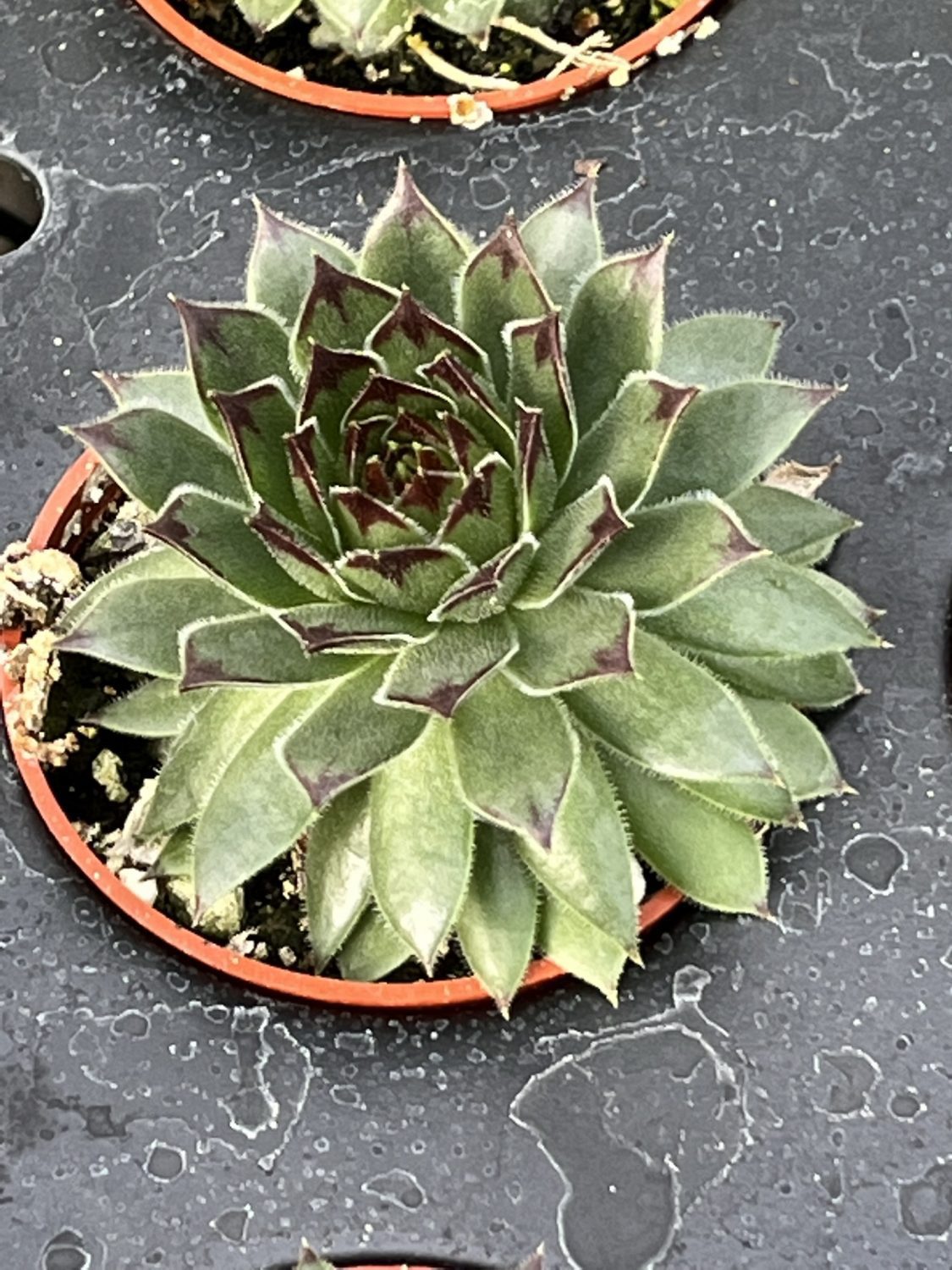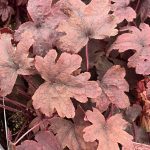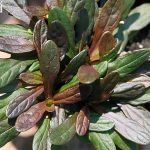Sempervivum; Hen and Chicks, Reinhardt
Price range: $4.99 through $9.99
Discount per quantity
| Quantity | 3 - 8 | 9 - 14 | 15+ |
|---|---|---|---|
| Price | Price range: $4.84 through $9.69 | Price range: $4.69 through $9.39 | Price range: $4.49 through $8.99 |
| % Discount | 3% | 6% | 10% |
Description
Sempervivum ‘Reinhardt’: The Cheerful Hen-and-Chicks That Wins Every Space
A Friendly Introduction
You and I both know the quiet thrill of spotting that perfect plant. It sits there, calm and confident, waiting for us to bring it home. Sempervivum ‘Reinhardt’ is one of those finds. This hardy hen-and-chicks grows neat rosettes that blush with color, shrug off frost, and fill cracks with life. Let’s walk through its story, its look, and the simple steps that keep it thriving. By the end, you will feel ready to team up with these tiny yet fearless succulents.
Part 1 – Description
Rosette at First Sight
‘Reinhardt’ forms tight rosettes that often reach two to three inches across. Each rosette is a mother hen. From her base come baby chicks that cluster at her feet. Over time those chicks repeat the cycle, weaving a thick, living mat.
Colors Through the Seasons
In spring the leaves usually open light green with cream-tinted edges. Sunlight invites warm rose tones along the tips. By midsummer, bright sun can turn entire rosettes rosy red. Cooler fall nights deepen the color again, giving you a sunset in miniature. In winter the rosettes tighten, showing olive green hearts wrapped in burgundy jackets.
Texture You Can Touch
The leaves feel smooth and slightly waxy. A fine powder, called farina, covers the surface. This silvery veil guards the plant from scorching rays and sudden rain. It also adds a gentle sheen that glows when light hits at an angle.
Roots of a Survivor
Sempervivum translates to “always living.” ‘Reinhardt’ proves the name true. In the wild its cousins cling to alpine cliffs. Roots search deep for pockets of grit, sand, and lime. Dry winds, baking sun, and freezing snow toughen them, not weaken them. When we place ‘Reinhardt’ in our gardens, that same grit-born spirit shows.
A Bloom to Remember
After three to four years a rosette may decide its time has come. It will lift a thick stalk topped with star-shaped pink flowers. Bees rush in. Once seed is set, the blooming rosette fades, yet the surrounding chicks carry on, filling the small gap in just one season.
Perfect Partners
You can tuck ‘Reinhardt’ beside creeping thyme, sedum, or blue fescue. Rock walls, hypertufa troughs, and stump planters give them the quick-draining perch they love. In other words, look for spots other plants avoid, and ‘Reinhardt’ will shine.
Part 2 – How to Care for Sempervivum ‘Reinhardt’
Light Love
Give these rosettes full sun for at least six hours. Morning sun keeps colors bright without mid-day scorch. In very hot zones, light shade after two o’clock helps prevent leaf tips from drying.
Soil and Drainage
Think rocky hillside. Mix two parts coarse sand or poultry grit with one part regular potting soil. Add a sprinkle of crushed limestone if your water is soft. The goal is fast flow. Wet feet spell trouble, but well-aired roots spell success.
Watering Routine
Water deeply, then walk away. The soil should dry before the next soak. During spring growth, you might water every seven to ten days. In summer heat, water when chicks start to wrinkle. In winter, rain and snow often give enough moisture on their own.
Feeding for Color
‘Reinhardt’ asks for very little food. In early spring, one pinch of balanced slow-release fertilizer, or a splash of dilute fish emulsion, wakes color and fills out form. Skip high-nitrogen feeds. Too much fertilizer stretches rosettes and washes out reds.
Temperature and Hardy Zones
Most gardeners cheer when they learn how cold-tough hens-and-chicks are. ‘Reinhardt’ laughs at -30 °F winters (USDA Zone 4) and sometimes lower. Summer heat up to 90 °F is fine so long as roots keep dry and open to air. Humid nights? Place pots where morning sun dries dew fast.
Potting and Containers
Shallow terracotta dishes, chipped teacups, concrete bowls—feel free to play. Layer pea gravel at the base, add that gritty mix, and nest each rosette so leaves sit on the surface. Top-dress with gravel chips. This keeps necks dry and shows off form. Rotate pots a quarter turn every few weeks for even color.
Propagation Made Simple
- Lift a Chick – In early spring or late summer, gently tug a baby rosette free. It will carry a slender stolon and a nub of roots.
- Set in Grit – Press the nub into dry cactus mix. Do not water for three days; this allows any broken tissue to seal.
- Water Lightly – After roots grab (about two weeks), add the new plant to your garden plan.
Common Pests and Problems
- Root rot: Comes from soggy soil. Fix drainage, lift and re-root healthy chicks.
- Mealybugs: Tiny cotton spots hide between leaves. Dab with isopropyl alcohol or spray neem.
- Stretching: Not enough sun. Move the pot or trim overhanging branches.
Seasonal Checklist
- Spring: Remove dead leaves, top-dress with fresh grit, trim bloom stalks from last year.
- Summer: Watch water, protect from standing rain, and enjoy peak colors.
- Fall: Clip spent flowers, separate crowded mats, and replant chicks.
- Winter: Brush off heavy snow if ice forms, but otherwise let nature insulate them.
Part 3 – Design Ideas and Everyday Joy
Living Mosaics
Plant three or four ‘Reinhardt’ rosettes among slate shards. Over one season they weave a quilt of greens and reds.
Fairy Gardens for All Ages
Use an old pie tin. Add sandy soil and small pebbles. Nest two hens and four chicks. Add a pebble path and one tiny house. Children will visit often, and so will you.
Wall-Top Wonders
Drill shallow pockets in a retaining wall. Fill with gritty mix, nest rosettes, and watch them spill like beads over stone. The contrast delights the eye and softens hard edges.
Table Centerpiece
Line a weathered wooden tray with plastic. Fill with soil and grit. Arrange hens in swirling patterns. Set on your picnic table in spring. When guests arrive, the living art sparks conversation.
Gift of Persistence
Root a handful of chicks in mini clay pots. Tie with twine and a hand-lettered tag. Share them at gatherings. You are passing on a plant that survives long after cut flowers fade.
Part 4 – Frequently Asked Questions
Will the mother hen die after blooming?
Yes, but only that single rosette. Her surrounding chicks quickly close the gap, so the colony stays full.
Can I grow ‘Reinhardt’ indoors?
It can survive, yet color fades in low light. Grow lights help, but outdoor sun still works best.
How fast will it spread?
Expect each rosette to set four to six chicks yearly. In one year, a four-inch pot can fill a six-inch bowl.
Why are my leaves turning brown at the base?
Old leaves age and dry. Gently pull them away. If the rot creeps upward, check for trapped moisture.
Is it safe near pets?
Yes. Sempervivum species are non-toxic to cats and dogs. Still, place pots where playful paws will not knock them over.
Part 5 – Simple Troubleshooting Chart
| Symptom | Likely Cause | Quick Fix |
|---|---|---|
| Pale, stretched rosettes | Not enough light | Move to full sun |
| Mushy center | Over-watering | Stop watering, improve drainage |
| Bleached leaves | Sudden intense heat | Provide light shade at midday |
| Slow growth | Poor soil nutrition | Light spring feeding |
Part 6 – Our Next Steps Together
We have explored Sempervivum ‘Reinhardt’ from root to rosette. We learned how it greets every season with fresh hues, laughs at frost, and rewards the gentle touch of mindful care. You now know how much sun it needs, how little water it wants, and how easy it is to multiply your colony. With gravel underfoot and open sky above, this hen-and-chicks becomes more than a plant. It becomes a steady friend that reminds us of strength in small packages.
Pick up a few rosettes, tuck them into that sunny nook, and watch them settle in. Over months and years they will build a quilt of life that asks for almost nothing yet gives quite a lot. Together, we can celebrate each new chick, each fresh color shift, and the quiet joy of a garden that thrives through simple care.
Bright Horizons Await Your Rosettes
Additional information
| Weight | N/A |
|---|---|
| Options | 2 in. (3 fl.oz.) Pot, 4 in. (16.9 fl. oz.) Pot |





